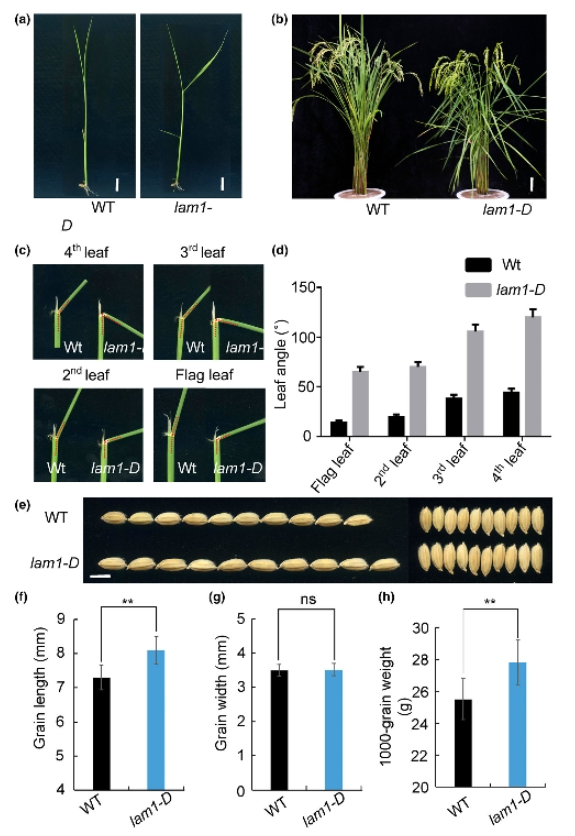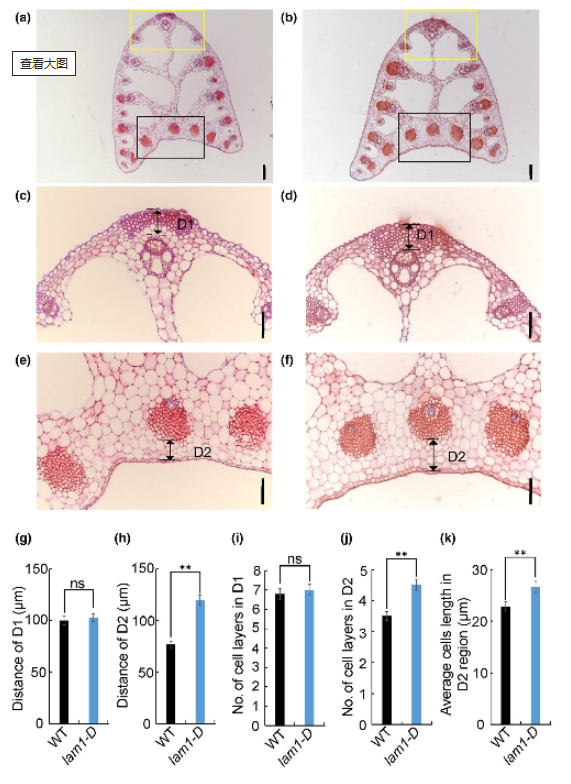Abstract:
Modifications of plant architecture can increase planting density, regulate photosynthesisand improve crop yields. Many basic helix-loop-helix (bHLH) transcription factors participatein the brassinosteroid (BR) signaling pathway and are critical for plant architecture morphogenesis in rice. However, the number of identified bHLH genes suitable for improving production value is still limited.
In this study, we cloned Lam1, encoding the typical bHLH transcription factor OsbHLH92OsbHLH92 knockout (KO) lines exhibit erect leaves. Decreases in the number and size of parenchyma cell layers on the adaxial side of the lamina joint in KO lines were the main reasonfor the decreased leaf angle. Genetic experiments verify that OsBU1 and its homologs aredownstream of OsbHLH92, which is involved in the noncanonical RGA1-mediated BR signaling pathway.
OsbHLH91, an OsbHLH92 homolog, plays both conserved and differentiated roles relativeto OsbHLH92. Notably, OsbHLH92-KO lines show erect leaves without the acquisition ofadverse agronomic traits. Moreover, by driving a specific panicle promoter, OsbHLH92 cangreatly increase productivity by at least 10% This study identifies new components of the BR signaling pathway, demonstrates theimportance of OsbHLH92 in improving planting density and crop productivity, and broadensour knowledge of typical and atypical bHLH family members in rice.
Key Words:
brassinosteroid, leaf angle.parenchyma cell layers, rice, typical bHLHtranscription factors, yield.




